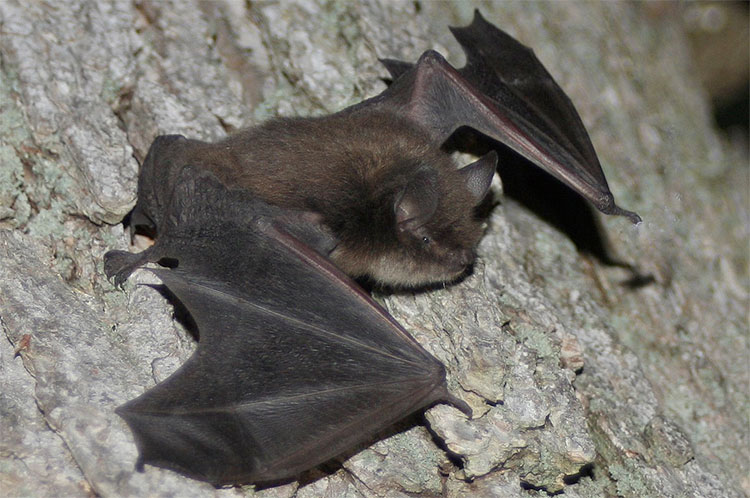• by Dr. Sarah D. Oktay, Managing Director UMass Boston Nantucket Field Station •
Last June I wrote about moths here on Nantucket in preparation for a “moth party” and a public education effort to teach people more about moths and get folks excited about photographing them. Since then I have learned more about moths and September is a great time to fall in love with the many moths flickering around our island. In case you have never been invited to a “moth party” what it involves is picking a dark warmish night with not too much wind and no rain. We then set up a variety of UV and mercury vapor lights and see what comes out to sheets hung from trees and buildings. We were fortunate to have Seabrooke Leckie attend our event last year who is a co author of the 2nd edition of the Peterson Guide to Moths of North American along with David Beadle. The guide covers northeastern North America, the area roughly from New Brunswick south to Virginia and west to Minnesota and Missouri. Nearly 1500 species, illustrated by close to 2000 photographs, are included. About 950 macromoths species and 550 of the smaller micromoths are described in the guide. And when we did a moth party back In August this summer, we were treated to the sight of a couple of bats. With Halloween approaching and Dracula performed to acclaim in our local live theatre production, I found I was in a “bat mood”. And I managed to write this entire article with minimum of Batman references.
As I write this article, I am in Portal, Arizona at the Southwestern Research Station which is 5400 feet up in the Chiricahau Mountains in Southeastern Arizona. Last night we were treated to a “show and tell” of several bats caught in small nets strung across open spaces in this bat paradise. Once you get a chance to see a variety of very cute bats like the lesser long nosed bat or the Mexican freetail bat (famous for their Carlsbad Caverns digs) you’ll be convinced that these much maligned creatures need a PR boost. Twenty-one different species of bats have been documented within 5-miles of the Southwestern Research Station’s doorstep. When I went to Costa Rica to visit several small field stations I was able to attend a bat “Mist netting” workshop to learn about bats down south. Many national parks and nature centers have started doing bat education to help us understand the role bats play in ecology. You might not know that some bats are pollinators. The lesser long nose bat not only migrates extreme distances, it also pollinates saguaro cactus flowers (http://www.desertmuseum.org/pollination/bats.php). Bat predators include raptors including owls, cats, and on the mainland, snakes and foxes.

From the Massachusetts Audubon’s Bat website we learn that there are many reasons to love bats, not the least of which is their ability to effectively nosh on several less desirable insect species (http://www.massaudubon.org/Nature_Connection/wildlife/index.php?subject=Mammals&id=20 Retrieved September 23, 2013.
“Bats consume thousands of nocturnal flying insects including mosquitoes, moths, and beetles, making them a more efficient insect control than birds or bug zappers. Dr. Thomas Kunz, a bat researcher at Boston University, estimates that the bats living within Route 128 eat 13 tons of insects each summer.
Bats belong to the order Chiroptera, which means “hand-wing.” This order is the second largest mammalian order, only surpassed by Rodentia in number of species. Their wings are composed of two thin layers of skin or membrane, attached to elongated finger bones. There are four fingers and a thumb on each membrane which control the wing’s movement. The thumb, located at the top of the wing, acts as a hook with which the bat is able to crawl on flat surfaces. A similar membrane stretches between the tail and hind legs.”
We don’t have a lot of bats out here on Nantucket but we do have a couple of species. It has been hard to determine if we have any permanent bat residents. At one time we likely did have a species or two that lived here year round but nowadays we mainly see visiting migrant bats as they fly south for the winter.
The two most common bats found in Massachusetts and likely also on Nantucket are the little brown myotis (Myotis lucifugus) and the big brown bat (Eptesicus fuscus), both roost in attics, barns, and other hot, dark places. The big brown bat (BBB) also likes to roost in crevices. You can sometime hear the BBB as it is one of the bat species who produces an audible sound in flight that has been compared to a series of clicks or to steam coming out of a teapot. The little brown and big brown bats have short, soft fur covering their head and body and, as their name suggests, both have rich brown bodies with slightly darker brown wings. The body of a little brown bat measures 4½ to 5½ inches long, including the tail, and has an 8½ to 10½ inch wingspan. When hibernating, the little brown bat can reduce its heart rate to 20 beats per minute, and even can stop breathing for 48 minutes. The big brown bat’s body ranges from 5½ to 8 inches in length with a 12 to 11¼ inch wingspan.
The other species of Massachusetts bats are the small-footed myotis, silver-haired bat, eastern pipistrelle, red bat, and hoary bat. Peter Brace also documents a few migrants that have been seen out here in his excellent book, “Nantucket a Natural History” available in both of our island bookstores and online (http://www.amazon.com/Nantucket-Natural-Peter-B-Brace/dp/0982266820). He notes that people have reported seeing hoary bats and red bats traveling through our skies nabbing a few moths as they make their way south. The hoary bat (Lasiurus cinereus) is a species of bat in the vesper bat family, Vespertilionidae also sometimes known as evening bats or common bats. Bats in this family have a little bony tail that protrudes and serves as a rudder and as a feeler. Some vesper bats species also use the tail as a type of catcher’s mitt for catching insects during flight; they then can wrap their wings around the prey and slurp them down. The hoary boat can be found throughout most of North America and much of South America, and migrates in early fall and late summer from Canada down to the southern U.S. The hoary bat is a pretty large bat averaging 5 to 6 inches long with a wingspan of 15-16 inches and weighing in at a hefty (for a bat) total of 26 grams (almost a full ounce). Hoary bats can fly over open water which explains why we see them on Nantucket occasionally and they prefer to hunt alone in wooded areas.
Unfortunately many of the bats in the northeast are being decimated by white-nose syndrome, a fungus that is killing the bat population in the eastern United States. Mammal experts are asking people to document when 10 or more bats are found roosting together in a colony. Some areas of the state have lost more the 90% of their bats to this fungus. There is not much we can do about white nosed syndrome, but hopefully the bats that survive will be the ones that have developed an immunity that can be genetically passed down. Fish and wildlife experts are concerned that the dwindling bat populations can lead to an uptick in human health issues relative to mosquitoes. Read more: http://www.wickedlocal.com/nantucket/news/x1852601539/State-seeks-information-on-summer-bat-colonies#ixzz2fgGBHWoO
Why write about moths and bats together? Well, for one thing, bats really like to eat moths and moths have started to get pretty creative in their avoidance of bats. Recently scientists have discovered that some moths make noises to deliberately throw off bat sonar. As you can recall, many bats use echolocation to track their prey. Bats aren’t blind but they have found by bouncing sound signals off of insects (and large things like trees and people that they don’t want to run into) they’ll be able to quickly and effectively eat. Different bat species use different frequencies and they may have extremely large ears or small ears or long noses or short noses or scream out of their mouths as adaptations for their echolocation tricks. Each technique has been honed through thousands of years of evolution. As a bat gets closer to an insect, they may produce 500 pulses per second versus the 10-20 per second they produce when they are casting about for prey.
My friend and somewhat famous science blogger Bug Girl has an excellent blog post about the various types of stridulation (think a violin bow against a string but with body parts) noises made by insects including the piercing noises made by a few moths. Her blog post is entitled “Musical Genitals” (http://membracid.wordpress.com/tag/stridulation/ ) and is essentially an article written for adults. It goes into more detail about ways that moths have evolved to use noise to avoid being eaten.
Earlier this year someone called the field station about a bat on the ground. Most bats cannot take off from the ground because they need to drop a couple of feet to get going. If you do find a bat on the ground, help it up into a tree using a towel for it to cling to as you transfer the bat. Never pick up a bat with bare hands, they can carry rabies. There are a couple of species that can get about on the ground, the lesser short tailed bat and the vampire bat are both capable ground dwellers. Usually you will find bats on the ground when the mom is trying to move them.
I hope you have enjoyed some of these simple facts and that you have developed an appreciation for these flying mammals. The Nantucket Biodiversity Initiative (www.nantucketbiodiversityinitiative.org is hosting a three day event you don’t want to miss the first week of November. On Saturday November 2nd come to a full day science conference at the Nantucket Hotel featuring scientist talking about their research sponsored by the NBI. You’ll be treated to a series of field trips Friday and Sunday to get out in the field and learn more about our ecology and flora and fauna.


